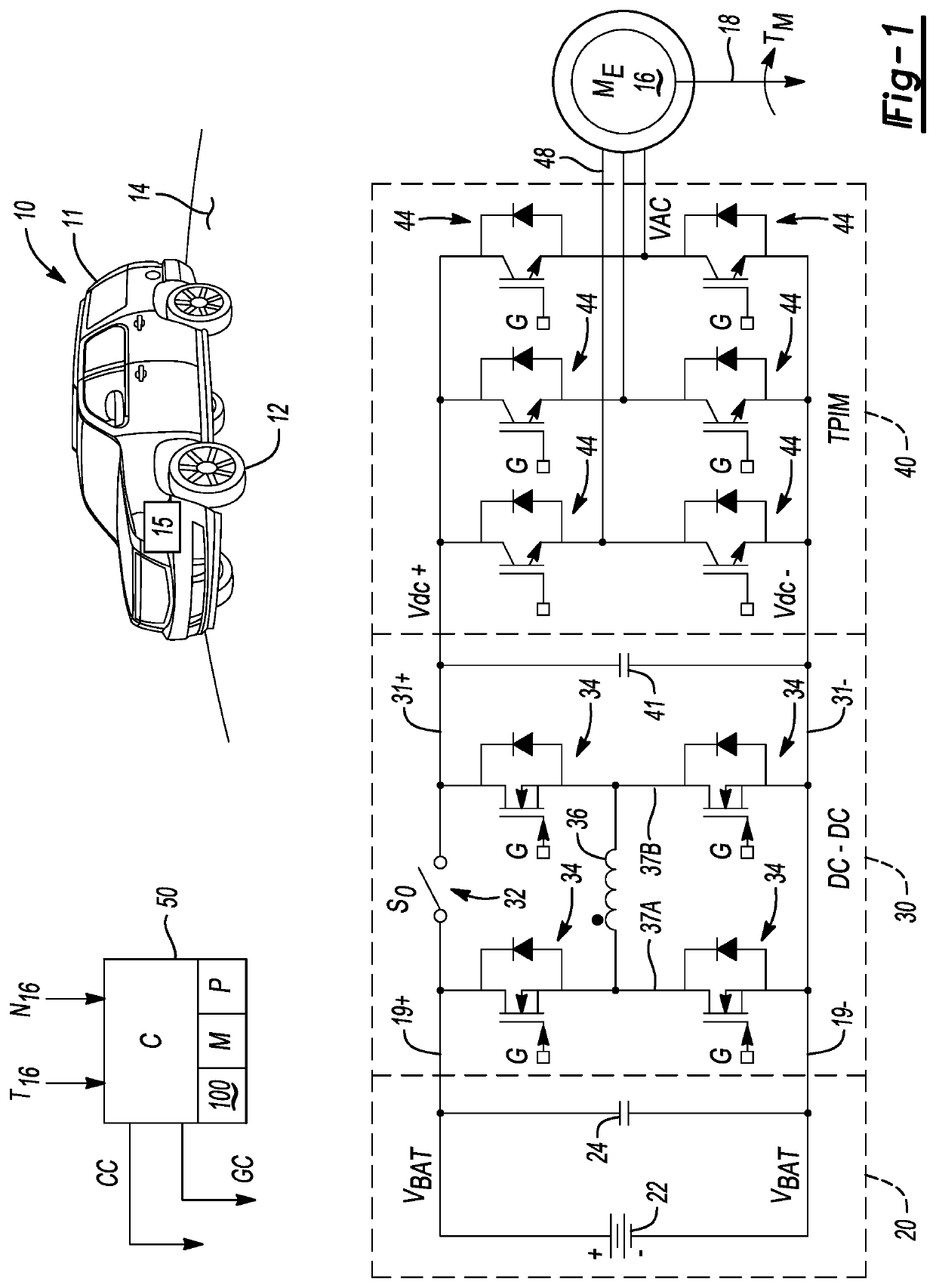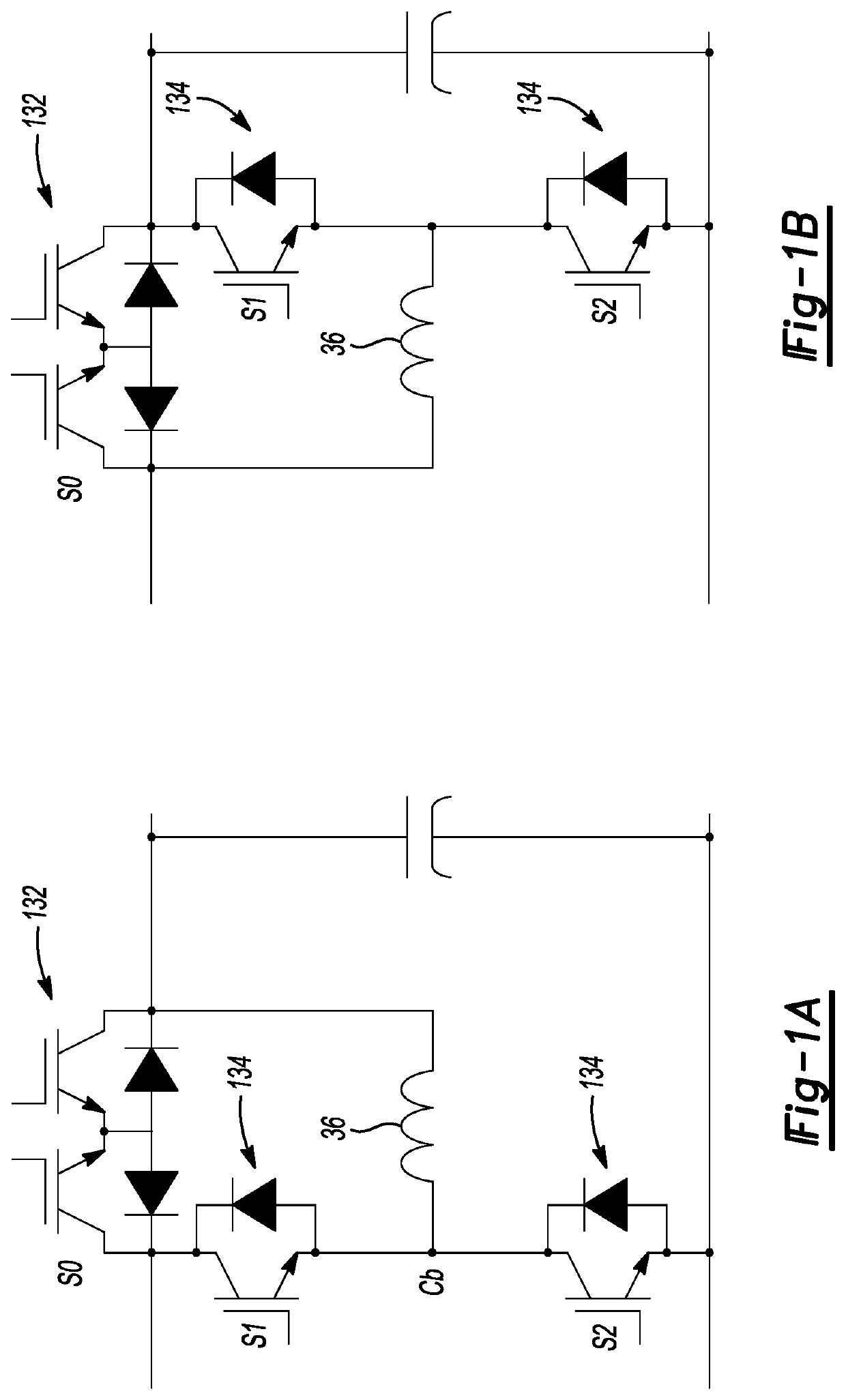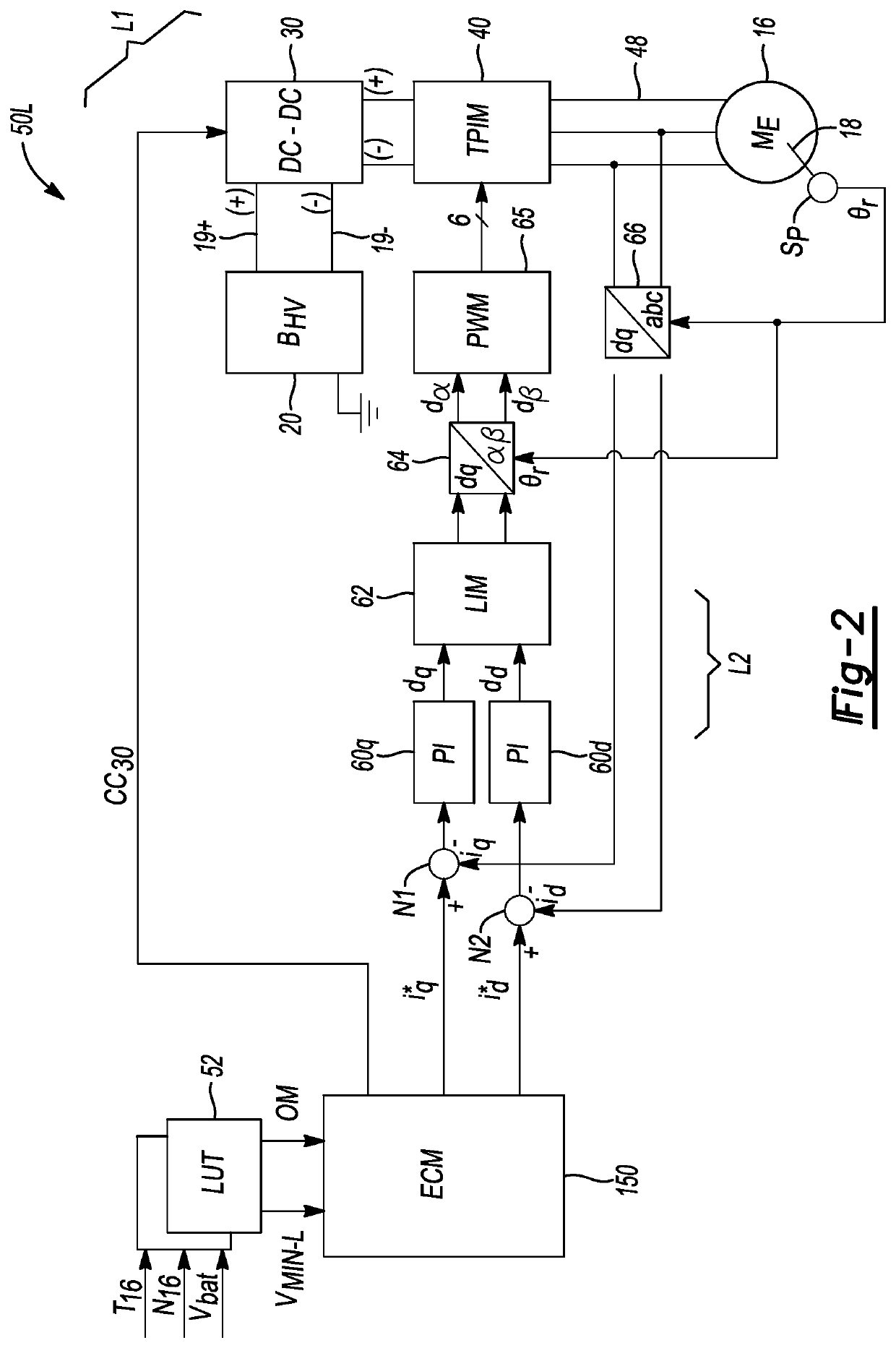Operating mode optimization for electric propulsion system with downsized DC-DC converter
a technology of electric propulsion system and operating mode optimization, which is applied in the direction of dc-ac conversion without reversal, battery/cell propulsion, transportation and packaging, etc., can solve the problems of size-proportionate electrical losses within the converter and its associated power electronic components, electrical losses also occur within the individual semiconductor switches of the converter, etc., to improve the overall drive performance of the electric propulsion system, reduce the proportionate reduction of losses of the inductor coil, and optimize energy efficiency
- Summary
- Abstract
- Description
- Claims
- Application Information
AI Technical Summary
Benefits of technology
Problems solved by technology
Method used
Image
Examples
Embodiment Construction
[0021]Referring to the drawings, wherein like reference numbers refer to like components throughout the several views, FIG. 1 depicts a mobile platform 10 having a body 11 and an electric propulsion system 15. The mobile platform 10 may be optionally embodied as a motor vehicle, a robot, etc., and thus equipped in such embodiments with road wheels 12 in rolling contact with a road surface 14. While the mobile platform 10 is one possible example of a system benefitting from the electric propulsion system 15, other beneficial applications for the electric propulsion system 15 may also be envisioned, including but not limited to stationary power plants, mobile platforms, and other types of land, air, or marine vehicles.
[0022]The electric propulsion system 15 includes a polyphase electric machine (“ME”) 16 having a rotatable output shaft 18. When the electric machine 16 is energized via application of a polyphase / alternating current voltage (“VAC”) to individual phase windings 48 of the...
PUM
 Login to View More
Login to View More Abstract
Description
Claims
Application Information
 Login to View More
Login to View More - R&D
- Intellectual Property
- Life Sciences
- Materials
- Tech Scout
- Unparalleled Data Quality
- Higher Quality Content
- 60% Fewer Hallucinations
Browse by: Latest US Patents, China's latest patents, Technical Efficacy Thesaurus, Application Domain, Technology Topic, Popular Technical Reports.
© 2025 PatSnap. All rights reserved.Legal|Privacy policy|Modern Slavery Act Transparency Statement|Sitemap|About US| Contact US: help@patsnap.com



